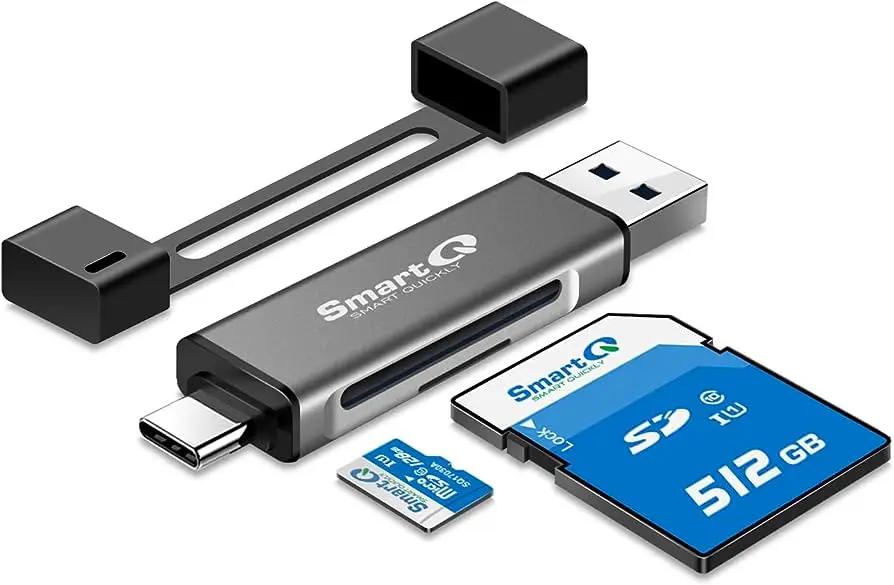How does a USB-C to SD Card reader work?


USB-C to SD Card readers are becoming increasingly popular as more devices, such as laptops and smartphones, are adopting the USB-C technology. These compact and versatile devices allow users to easily transfer data between their SD cards and USB-C enabled devices. But how exactly do USB-C to SD Card readers work? In this article, we will explore the technology behind these devices, how they facilitate data transfer, and their compatibility with different devices.
Understanding USB-C
Before diving into the specifics of USB-C to SD Card readers, it is important to have a basic understanding of USB-C technology. USB-C, also known as USB Type-C, is a universal connectivity standard that is designed to be smaller, faster, and more versatile than its predecessors. It features a reversible connector, meaning that it can be plugged in either way, eliminating the frustration of trying to insert the cable correctly.
How USB-C to SD Card Readers Work
USB-C to SD Card readers are essentially adapters that allow you to connect an SD card to a USB-C port. They typically consist of a USB-C connector on one end and an SD card slot on the other. When you insert an SD card into the reader and connect it to a USB-C enabled device, the reader acts as a bridge, facilitating the transfer of data between the SD card and the device.
Data Transfer Speed
One of the key advantages of USB-C to SD Card readers is their ability to transfer data at high speeds. USB-C technology supports the USB 3.1 standard, which offers data transfer speeds of up to 10 Gbps (gigabits per second). This means that you can transfer large files, such as high-resolution photos or videos, quickly and efficiently.
Power Delivery
USB-C to SD Card readers also support power delivery, which means that they can provide power to the connected device or receive power from it. This is particularly useful for devices that have limited battery life, as the reader can charge the device while data is being transferred. Additionally, some USB-C to SD Card readers come with an additional USB-C port, allowing you to connect other devices or accessories while using the reader.
Compatibility
USB-C to SD Card readers are compatible with a wide range of devices, including laptops, smartphones, tablets, and cameras. However, it is important to note that not all devices have a built-in SD card slot or support USB-C. In such cases, you may need to use a USB-C to USB-A adapter to connect the reader to your device.
Operating System Compatibility
USB-C to SD Card readers are compatible with various operating systems, including Windows, macOS, and Linux. They are also compatible with Android and iOS devices, although you may need to install a third-party app to access the files on the SD card.
SD Card Compatibility
USB-C to SD Card readers support different types of SD cards, including SDHC (Secure Digital High Capacity), SDXC (Secure Digital eXtended Capacity), and UHS-I (Ultra High-Speed). It is important to check the specifications of your SD card and ensure that it is compatible with the reader before making a purchase.
Conclusion
USB-C to SD Card readers are a convenient and efficient way to transfer data between SD cards and USB-C enabled devices. They leverage the power and versatility of USB-C technology to provide high-speed data transfer and power delivery capabilities. With their wide compatibility and ease of use, USB-C to SD Card readers are a valuable accessory for anyone who frequently works with SD cards and USB-C devices.
Recent Posts
How do I create an engaging and informative online quiz or assessment?
Creating an engaging and informative online quiz or assessment can be a powerful tool for… Read More
What are the most effective methods for managing and reducing work-related stress in the hospitality industry?
Work-related stress is a common issue in the hospitality industry, where employees often face long… Read More
How can I improve my assertiveness and communication skills in a leadership position?
In a leadership position, assertiveness and effective communication skills are crucial for success. Being able… Read More
What are the key elements of a successful employee recognition and rewards program?
Employee recognition and rewards programs play a crucial role in motivating and engaging employees, as… Read More
How do I effectively manage and respond to customer feedback and reviews?
Customer feedback and online reviews play a crucial role in shaping a company's reputation and… Read More
What are the best strategies for effective time management as a stay-at-home parent?
Effective time management is crucial for stay-at-home parents who juggle multiple responsibilities on a daily… Read More